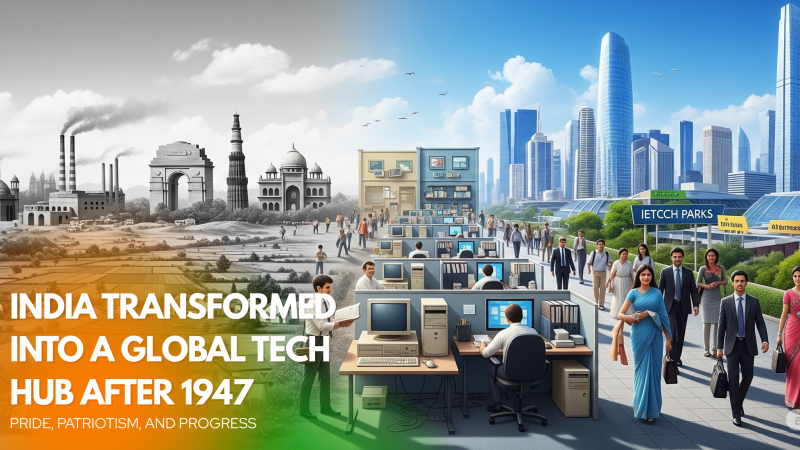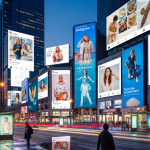Filmmaking has always been a blend of creativity, imagination, and craft. But in today’s digital era, there’s another crucial player behind the curtain: technology. From pre-production planning to post-production polishing, every stage of filmmaking now depends on cutting-edge tools and digital innovation.
The fusion of art and technology has redefined storytelling itself. Let’s dive into how technology shapes modern filmmaking, transforming the way stories are told, captured, and experienced on screen.
Digital Revolution: The Rise of Modern Filmmaking Tools
Once upon a time, filmmakers lugged around reels of film and relied on physical splicing to edit scenes. Fast-forward to now the digital revolution has completely changed that.
- Digital cameras shoot in ultra-high definition, capturing crisp visuals even in challenging lighting conditions.
- Editing software like Adobe Premiere Pro, Final Cut Pro, and DaVinci Resolve allows seamless cutting, color correction, and effects integration.
- Cloud-based storage makes it easy for editors, producers, and visual artists across continents to collaborate in real time.
These tools not only simplify production but also democratize filmmaking, enabling independent creators to produce professional-quality films without Hollywood-sized budgets.
The shift to digital workflows has made filmmaking faster, smarter, and more flexible setting the stage for how technology shapes modern filmmaking today.
CGI and VFX: Turning Imagination Into Reality
If you’ve ever been awed by fantastical creatures, epic space battles, or lifelike digital landscapes, you’ve witnessed the power of Computer-Generated Imagery (CGI) and Visual Effects (VFX).
- CGI builds entire worlds and characters from scratch using advanced modeling and rendering tools.
- VFX blends these computer-generated elements with live-action footage to create seamless illusions.
- Blockbusters like Avatar, The Lord of the Rings, and Avengers: Endgame rely heavily on these techniques to bring imagination to life.
Today, even smaller productions use VFX for subtle enhancements like adding weather effects, removing unwanted objects, or altering lighting conditions.
CGI and VFX have expanded the boundaries of what’s possible, proving that when creativity meets technology, the results can be breathtaking.
Virtual Production: Filming in Digital Worlds
Virtual production represents one of the biggest leaps in modern filmmaking. Instead of shooting against green screens and adding backgrounds later, directors can now film in fully immersive digital environments.
- LED walls and real-time rendering engines like Unreal Engine simulate realistic backdrops that react to camera movement.
- Actors perform in front of these digital sets, creating natural lighting and reflections that blend flawlessly.
- Productions such as The Mandalorian and Dune: Part Two have embraced this method with stunning results.
Virtual production shortens shooting schedules, reduces post-production work, and opens creative possibilities previously unimaginable. It’s a true example of how technology shapes modern filmmaking by merging physical and virtual storytelling.
Artificial Intelligence: The New Assistant Director
Artificial Intelligence (AI) is no longer science fiction it’s an essential filmmaking companion.
- AI-driven tools analyze scripts to predict audience engagement and suggest narrative improvements.
- Automated editing assistants can tag footage, select the best takes, and sync audio with video in minutes.
- Deepfake and voice synthesis technologies allow actors to appear younger or speak different languages convincingly.
AI also aids in color grading, sound enhancement, and special effects. By automating repetitive tasks, it gives filmmakers more time to focus on creativity and storytelling.
As machine learning evolves, AI will continue to influence how technology shapes modern filmmaking, making production smarter and storytelling sharper.
Drones and Aerial Cinematography
Aerial cinematography was once limited to expensive helicopter shots. Now, drones have made those cinematic sweeps accessible to everyone.
- Lightweight drones capture stunning panoramic views and high-speed chases.
- They can navigate through tight spaces, over oceans, and across cityscapes with ease.
- Modern drones record in 4K or even 8K, producing professional-grade footage on a modest budget.
Drones have opened up fresh creative perspectives. Whether it’s the sweeping intro of a travel documentary or the dramatic skyline of a thriller, this technology allows directors to capture scenes that were once logistically impossible.
3D Printing and Practical Effects Reimagined
While digital effects steal the spotlight, 3D printing has quietly revolutionized practical filmmaking.
- Props, costumes, and set designs can now be printed quickly and precisely.
- It saves time, cuts down material waste, and allows for easy customization.
- Filmmakers can prototype, test, and refine designs before committing to final versions.
Blockbusters like Black Panther and The Batman used 3D-printed elements to achieve intricate costume details and unique props. This blend of traditional craftsmanship and new-age design perfectly illustrates how technology shapes modern filmmaking from every angle.
Sound Design and Immersive Audio
A film’s emotional core often lies in its sound. Advances in audio technology have elevated storytelling to new heights.
- Dolby Atmos and 3D soundscapes make audiences feel like they’re inside the story.
- Digital mixing tools provide total control over sound layering and spatial positioning.
- AI-powered software can clean up background noise and even recreate missing dialogue.
Immersive sound transforms a movie from something we watch to something we experience. Whether it’s the roar of an engine or the whisper of wind through trees, sound technology ensures the magic feels real.
The Future: Real-Time Filmmaking and Beyond
The future of cinema is being written right now, and it’s more interactive and connected than ever.
- Virtual Reality (VR) and Augmented Reality (AR) are transforming how audiences engage with stories.
- Blockchain technology may soon handle digital rights, ensuring transparent ownership and royalties.
- 5G networks and cloud computing enable instant collaboration between teams across continents.
In the years ahead, real-time filmmaking powered by these innovations will further prove how technology shapes modern filmmaking making creativity boundless and collaboration limitless.
Conclusion
From CGI and drones to AI and virtual production, technology has completely redefined the art of storytelling. Every film today, whether an indie short or a big-budget blockbuster, carries the imprint of innovation.
The magic of cinema no longer happens solely on set; it’s crafted through algorithms, software, and creative collaboration that span the globe. This seamless fusion of art and technology proves that technology shapes modern filmmaking in extraordinary ways pushing imagination beyond limits.
And just as technology connects filmmakers across borders, platforms like Wiraa connect professionals to remote opportunities worldwide. Whether you’re a screenwriter, designer, or digital editor, Wiraa helps you collaborate, create, and grow because in today’s connected world, creativity knows no boundaries.




